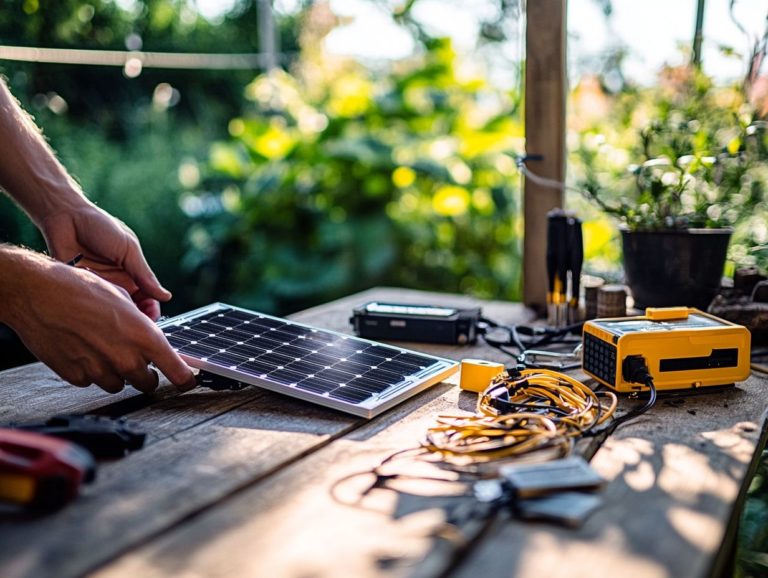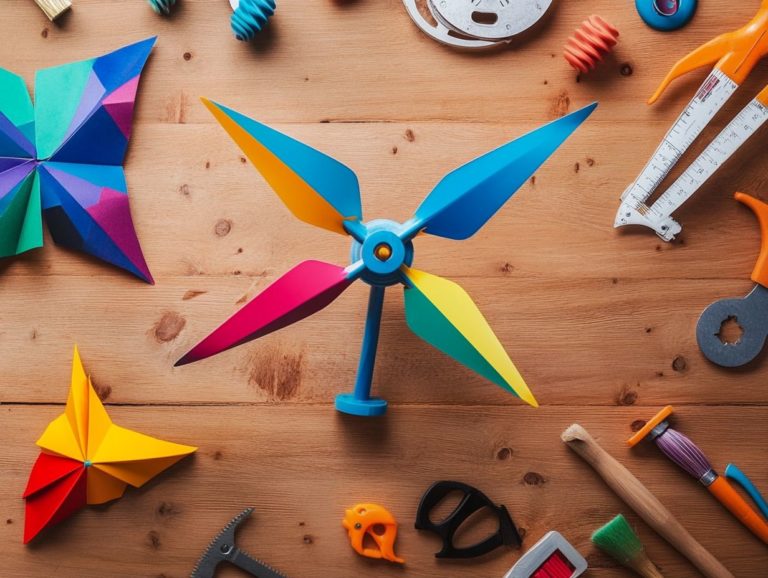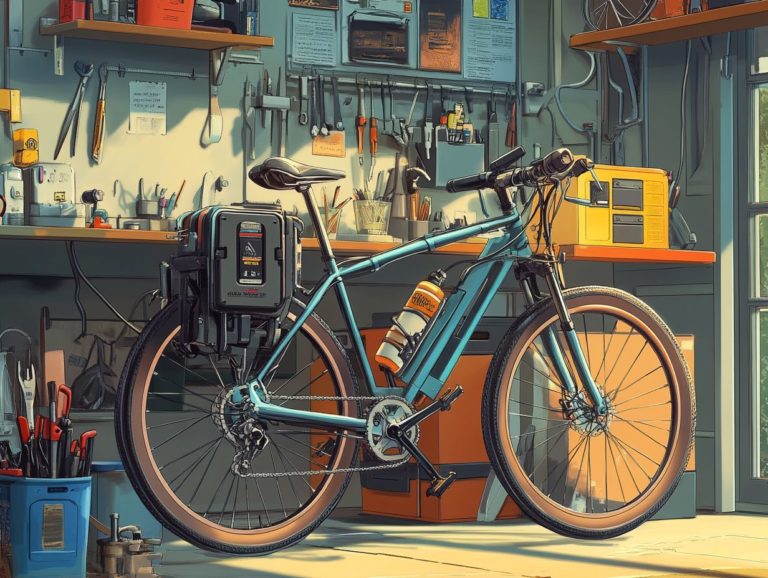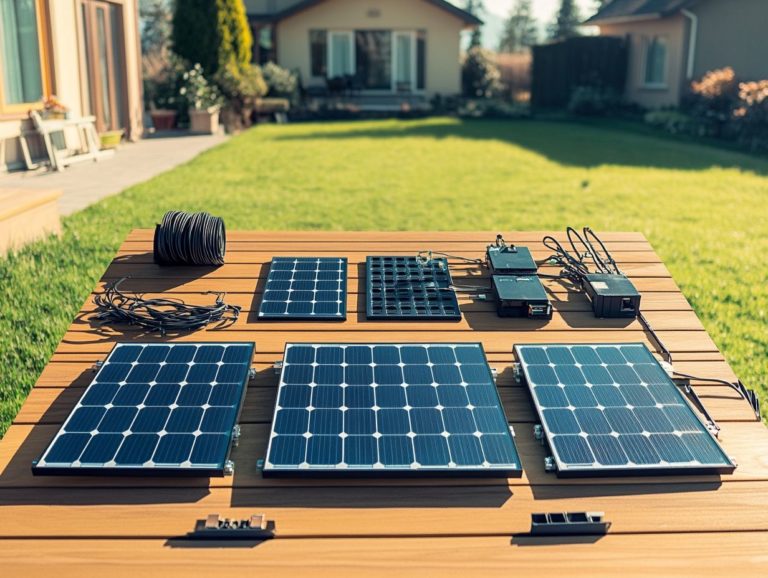How to Build Your Own Energy-Efficient Greenhouse
Creating your own energy-efficient greenhouse can elevate your gardening experience. It provides a controlled environment ideal for nurturing plants year-round. By incorporating advanced greenhouse design, you can optimize energy efficiency and promote sustainable gardening practices.
This guide explores the many benefits that greenhouses offer. From promoting robust plant growth to minimizing energy consumption, proper greenhouse optimization significantly enhances these benefits. You will discover essential planning tips, such as the best location, size, and design considerations, along with recommendations for sustainable materials and construction techniques. This guide also includes insights into choosing the right greenhouse types and materials to enhance your structure.
We will discuss effective heating and cooling solutions, including radiant heating and HVAC systems. Strategies to maximize energy efficiency and crucial maintenance tips will ensure your greenhouse flourishes.
Prepare to cultivate your green thumb and embark on a rewarding gardening journey with tips on humidity management and natural ventilation!
Contents
- Key Takeaways:
- Benefits of a Greenhouse
- Planning Your Greenhouse
- Key Materials for Greenhouse Success
- Heating and Cooling Your Greenhouse
- Maximizing Energy Efficiency
- Maintaining Your Greenhouse: Key Considerations for Sustained Efficiency
- Frequently Asked Questions: Insights for Energy-Efficient Greenhouse Management
- 1. What are the key elements to consider when building an energy-efficient greenhouse?
- 2. How can I ensure my greenhouse maintains a consistent temperature without using excessive energy?
- 3. What is the best location for building an energy-efficient greenhouse?
- 4. How can I reduce my greenhouse’s energy consumption through design and layout?
- 5. Are there any specific materials I should use for building an energy-efficient greenhouse?
- 6. How can I use renewable energy sources to power my greenhouse?
Key Takeaways:

- An energy-efficient greenhouse offers numerous benefits, including reduced energy costs and a more sustainable gardening experience.
- When planning your greenhouse, consider factors such as location, size, and design to optimize energy efficiency and maximize plant growth. Integrate energy-efficient technologies and conduct energy audits to ensure optimal performance.
- Choosing sustainable materials and implementing energy-saving practices, such as LED lighting and thermal screens, can help reduce energy consumption and maintain an environmentally-friendly greenhouse.
Benefits of a Greenhouse
A greenhouse is a remarkable asset for enhancing energy efficiency and optimizing plant growth. It provides a controlled environment that significantly improves both crop yield and quality. Controlling the climate and humidity in a greenhouse boosts these benefits.
By employing advanced design techniques like sunlit structures and automated systems you can effectively harness solar power while minimizing energy costs and reducing your environmental footprint. Leveraging greenhouse technology maximizes efficiency.
Incorporating energy-efficient appliances and systems, such as LED lighting and sophisticated irrigation setups, fosters a sustainable gardening approach. This not only reduces energy consumption but also simplifies greenhouse maintenance. These steps are essential for lowering energy costs and ensuring greenhouse optimization.
The result? Thriving plants, no matter the weather outside.
Why Choose an Energy-Efficient Greenhouse?
Investing in an energy-efficient greenhouse saves you money and helps the environment. It significantly lowers your energy costs while promoting eco-friendly practices that align with climate objectives. This choice also supports the use of budget-friendly and efficient structures.
Beyond immediate utility savings, these structures often feature cutting-edge technologies like thermal mass materials that hold heat or advanced glazing, effectively minimizing heat loss and creating a stable climate for your plants year-round. For those looking to maximize these advantages, learning how to create a smart energy-efficient home can provide further insights. Robust insulation and energy-efficient heating methods can further enhance these benefits.
By embracing energy-efficient greenhouses, you may qualify for various government incentives designed to encourage eco-friendly upgrades. Financial support for solar panels or automated climate control systems boosts your sustainability efforts and maximizes your return on investment. For those interested in building your own, learning how to build a compact solar greenhouse can be a valuable step. Various greenhouse services can assist you in implementing these energy-efficient solutions.
Ultimately, integrating such innovative solutions cultivates a thriving ecosystem while delivering substantial energy savings, positively impacting both the environment and your budget.
Start planning your energy-efficient greenhouse today and see the difference it makes in your gardening!
Planning Your Greenhouse
When planning your greenhouse, it is essential to consider factors like location, size, and design. These choices will greatly affect the energy efficiency and performance of your greenhouse.
Choosing the right location helps you maximize sunlight exposure. Meanwhile, size and design are important for air circulation, thermal insulation, and the ease of maintenance. Each of these decisions sets the foundation for a successful greenhouse that meets your needs while incorporating sustainable practices.
Location, Size, and Design Considerations
The location, size, and design of your greenhouse shape its energy efficiency and climate control. Careful planning is important. Choosing appropriate greenhouse coverings and insulation can significantly enhance performance.
Your greenhouse’s location is crucial. It determines how well you can harness sunlight during the day. Positioning your greenhouse to maximize exposure helps convert natural light into vital energy, seamlessly integrating with your climate management strategies.
The size of your greenhouse influences air circulation and temperature regulation, affecting energy consumption. Design elements like orientation and material choices significantly impact thermal insulation and weatherproofing, helping maintain a stable internal environment. Proper crop density management is vital for optimal plant growth and energy savings.
By selecting high-quality, insulated materials, you can reduce heating costs and minimize your ecological footprint. This approach ensures sustainability and fosters strong plant development, setting the stage for thriving growth. Regular energy audits help identify areas for reducing energy costs.
Key Materials for Greenhouse Success
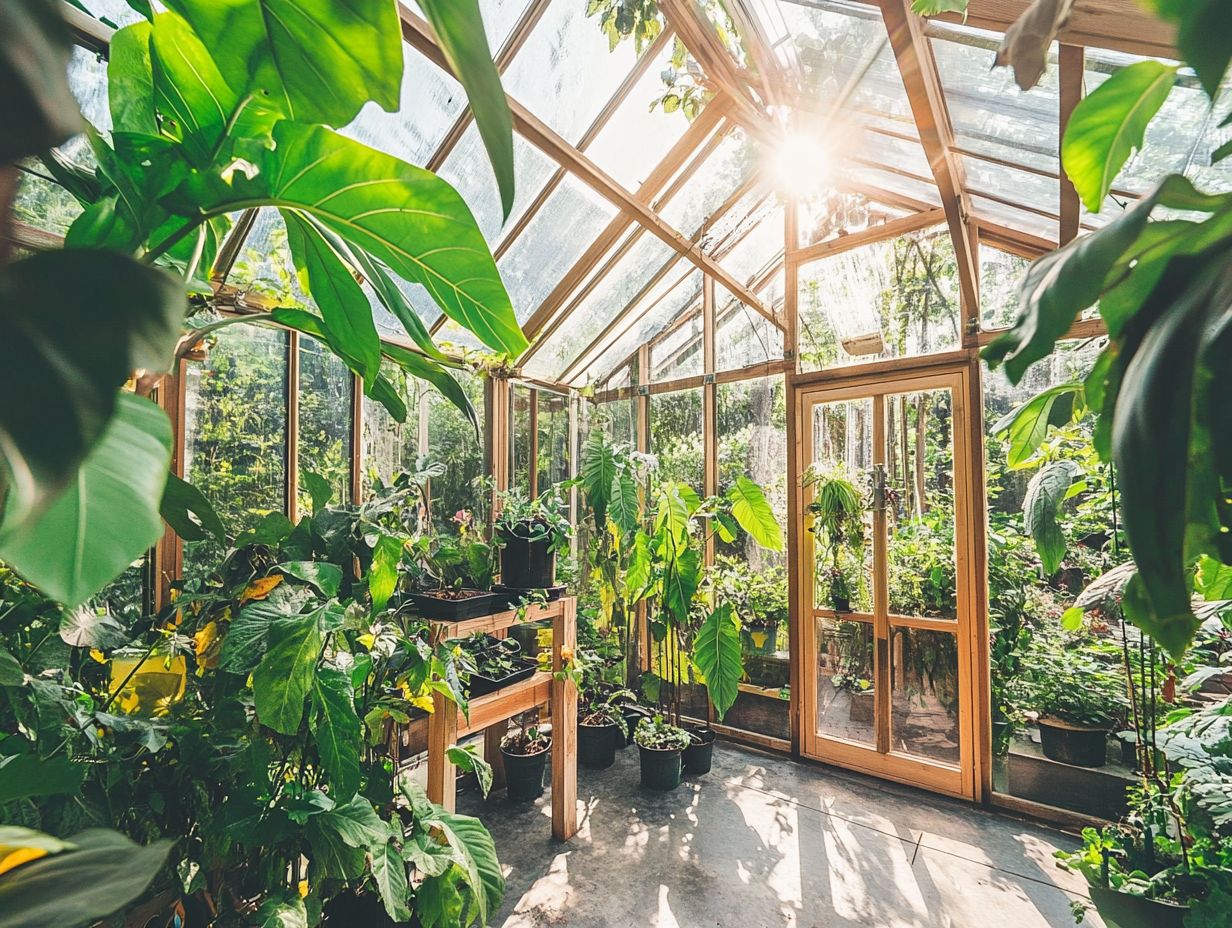
Picking the right materials will make your greenhouse thrive! Choosing the right materials is essential for achieving optimal energy efficiency and durability. Thoughtful selection supports sustainable gardening practices and minimizes your overall environmental impact. Materials like twin-wall polycarbonate, a type of durable plastic, and polyethylene can provide excellent insulation while being environmentally friendly.
Choosing Sustainable and Energy-Efficient Materials
Opting for sustainable and energy-efficient materials is crucial for maximizing your energy savings and enhancing your greenhouse’s performance. This ensures it operates at its best while minimizing negative impacts on the environment.
Selecting materials like thermal screens and high-quality insulation layers is key to reducing air leaks. This creates a controlled environment that promotes optimal plant growth. By investing in these structures, you contribute to sustainability and enjoy significant long-term benefits.
These benefits include lower energy costs, reduced dependence on non-renewable resources, and improved durability of your greenhouse. Don’t wait! Regular maintenance and monitoring are essential to sustain these advantages.
Making environmentally conscious choices aligns with your goals of energy efficiency and reducing your ecological footprint, ultimately paving the way for a greener future. Incorporating energy-efficient gardening practices can further enhance your efforts.
Step-by-Step Construction Process
Building a greenhouse is a careful project. It requires a strategic approach to ensure energy efficiency and sustainability.
Striking the right balance between sun exposure and insulation is essential, as these elements greatly impact both energy consumption and the health of your plants. Start by selecting an ideal location that receives sunlight while remaining protected from harsh weather conditions. Efficient insulation and humidity control are key components to consider.
Opt for high-quality materials, like double-walled polycarbonate or low-E glass, to boost how well the greenhouse keeps heat and minimize heating expenses during the colder months. Enhance your design with features such as automated ventilation systems and rainwater harvesting solutions to further support sustainability. For more tips, check out how to make your home more energy efficient. Utilizing portable conveyors like Rapid-Veyor can improve operational efficiency during construction.
By committing to regular monitoring and maintenance and employing energy-efficient heating methods, you will not only cultivate a thriving environment for your plants but also optimize your long-term operational costs.
Heating and Cooling Your Greenhouse
Heating and cooling systems are the backbone of a greenhouse. They maintain optimal climate conditions. By effectively regulating temperatures, they not only promote energy efficiency but also significantly enhance the performance of energy-efficient appliances.
With the right systems in place, you can create an environment that fosters growth and vitality for your plants. Automated systems can help in maintaining these optimal conditions consistently.
Options for Energy-Efficient Temperature Control
You have a variety of energy-efficient options for temperature control in your greenhouse, each playing a crucial role in creating the ideal climate for your plants while also reducing energy costs. These include advanced climate control systems and heating and cooling systems.
Consider implementing adjustable heating and cooling systems that can be seamlessly integrated into your greenhouse’s design. For instance, using smart thermostats enables you to monitor and adjust temperature settings remotely, ensuring that the conditions remain optimal for the specific plants you re nurturing. This is especially useful for growing diverse crops like annuals, perennials, and even specialized plants like cannabis.
Incorporating thermal mass elements, like water barrels or stone walls, can further enhance your greenhouse’s efficiency. These features help stabilize temperature fluctuations by absorbing heat during the day and releasing it at night. Not only do these technologies contribute to significant energy savings, but they also foster healthier plant growth by mitigating stress from extreme temperature changes, ultimately leading to better yields and higher-quality produce. For more insights, check out this guide on how to construct an energy-efficient shed. Regular energy audits can help ensure these systems are operating at peak efficiency.
Maximizing Energy Efficiency

To maximize energy efficiency in your greenhouse, focus on implementing strategies that effectively reduce energy consumption, enhance greenhouse performance, and ultimately decrease energy costs. This includes employing energy-efficient gardening techniques and regular greenhouse maintenance.
This can be achieved through the integration of automated systems and the latest modern technologies. By taking these steps, you can create a thriving and sustainable greenhouse environment!
Tips for Reducing Energy Consumption and Enhancing Greenhouse Optimization
Reducing energy consumption in your greenhouse is vital for achieving significant energy savings. It also allows for eco-friendly upgrades that benefit the environment and your sustainable gardening efforts.
By adopting effective strategies, you can cultivate a more sustainable environment for your plants while simultaneously lowering your utility costs. One essential method involves optimizing thermal screens, which are special curtains that help keep your greenhouse warm. Additionally, exploring DIY energy-efficient landscaping ideas can further enhance greenhouse optimization with automated systems.
Enhancing insulation around your greenhouse structure boosts energy retention, ensuring a more stable climate for your plants. Adding insulation layers and using weatherproofing techniques are crucial for energy efficiency. Incorporating energy-efficient appliances, such as LED grow lights and smart thermostats, complements these efforts by reducing energy usage without sacrificing plant health. Additionally, if you’re interested in sustainability, learning how to build your own solar water heater can further enhance your greenhouse’s energy efficiency. Proper greenhouse design can also play a pivotal role in maximizing energy efficiency.
These actions elevate the overall maintenance and performance of your greenhouse while promoting a more responsible and productive gardening practice. Consider different greenhouse types to improve energy savings and overall efficiency, including how to build an energy-efficient outdoor space.
Maintaining Your Greenhouse: Key Considerations for Sustained Efficiency
Maintaining your greenhouse properly is essential for ensuring its longevity and maximizing its performance. Diligent care upholds energy-efficient gardening practices, preserves plant health, and optimizes the environmental control systems within your space. Regular energy audits can help identify areas for improvement.
Regular Maintenance and Troubleshooting Tips
Regular greenhouse maintenance and troubleshooting are essential for effective greenhouse management. These practices ensure that your energy-efficient appliances and climate control systems operate at peak performance.
By diligently addressing routine maintenance tasks like checking seals and joints for air leaks you can prevent significant energy loss and keep operational costs in check. Monitoring humidity levels and fine-tuning ventilation systems are critical for cultivating optimal conditions for plant growth. Keeping an eye on humidity sensors and replacing any faulty equipment as needed will further enhance the functionality of your climate control systems.
Ensuring proper humidity management and air circulation can create a thriving environment for your plants. These proactive strategies create a more productive environment while promoting long-term sustainability by reducing waste and lowering energy consumption. This highlights the importance of integrating these practices into your overall greenhouse management approach. Utilizing energy-efficient technologies and planning for energy cost reductions will further enhance the benefits.
Frequently Asked Questions: Insights for Energy-Efficient Greenhouse Management
1. What are the key elements to consider when building an energy-efficient greenhouse?
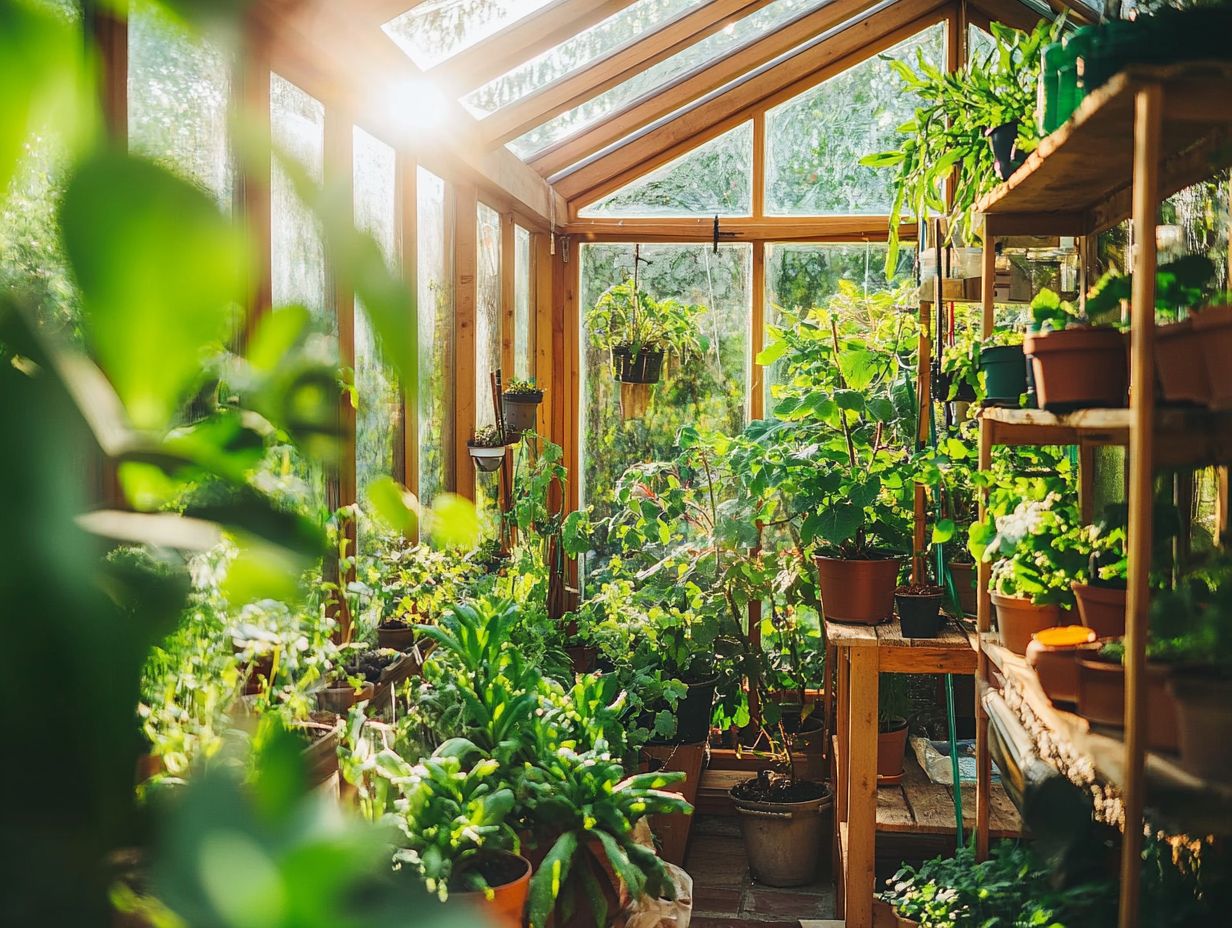
Key elements to consider when building an energy-efficient greenhouse include proper insulation, efficient heating systems, cooling systems, and utilizing natural lighting. Additionally, focusing on greenhouse insulation and design considerations such as greenhouse coverings can make a significant difference.
2. How can I ensure my greenhouse maintains a consistent temperature without using excessive energy?
To maintain a consistent temperature in your greenhouse without using excessive energy, install a thermal curtain to trap heat, use a temperature-controlled ventilation system, and choose energy-efficient heating and cooling equipment. Furthermore, integrating solar power can provide a renewable source of energy.
3. What is the best location for building an energy-efficient greenhouse?
The best location for an energy-efficient greenhouse is typically a south-facing area. This spot offers ample sunlight and protection from strong winds. By choosing this location, you can harness natural heating and reduce the need for artificial lighting and heating.
Proper sunlight harnessing is crucial for maximizing energy efficiency.
4. How can I reduce my greenhouse’s energy consumption through design and layout?
Incorporating design features that make the most of sunlight exposure is key. Place the greenhouse at an angle to maximize sunlight and use reflective materials.
Additionally, consider heat-retaining materials like stone or concrete. With thoughtful planning for climate and crop density, you can enhance energy efficiency in your greenhouse.
5. Are there any specific materials I should use for building an energy-efficient greenhouse?
Absolutely! Here are some fantastic materials for your energy-efficient greenhouse: double- or triple-paned insulated glass, polycarbonate panels, and thermal mass materials like adobe or concrete.
Twin-wall polycarbonate and polyethylene bags are also excellent options for greenhouse materials.
6. How can I use renewable energy sources to power my greenhouse?
Act now by incorporating renewable energy sources like solar panels, wind turbines, or hydroelectric systems to power your greenhouse. These sources can effectively power lighting, heating, and cooling systems, significantly reducing your reliance on traditional energy.
By opting for energy-efficient technologies like LED lighting and HVAC systems, you can make your greenhouse more sustainable.


